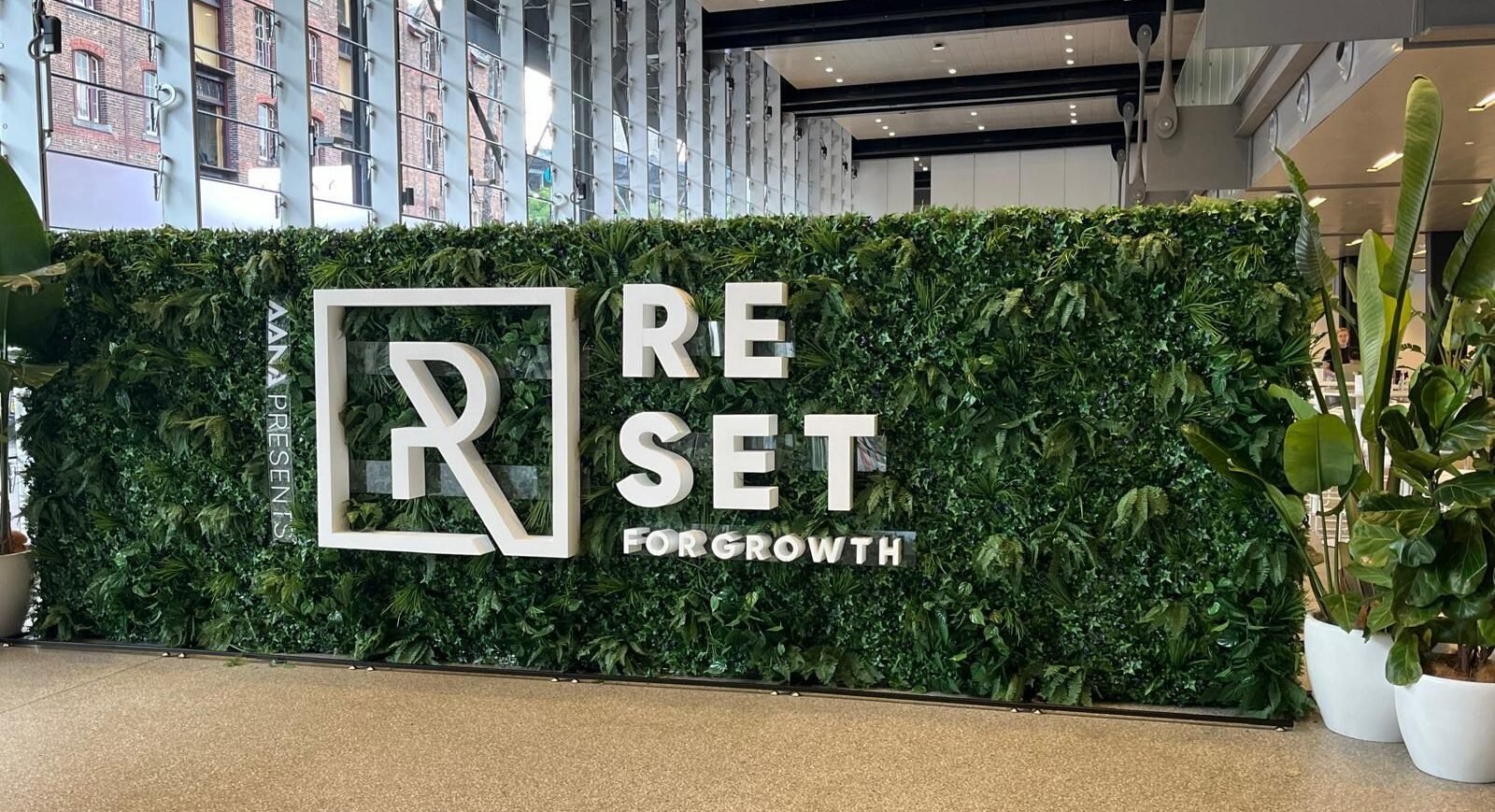Almost every major agency boss and client gathered at Sydney’s Overseas Passenger Terminal yesterday for the AANA‘s annual flagship conference, RESET.
AANA CEO Josh Faulks opened the day, themed around ‘RESET for Growth’, noting: “Geopolitical issues, sticky inflation, higher-for-longer interest rates and the rising cost of living is really having a bit impact on consumer confidence. The outlook is flat for the foreseeable future.
“At same time for many the cost of doing business continues to climb, squeezing margins and increasing pressure to cut costs.”

Josh Faulks
Bernard Salt, futurist
Salt was the first to take to the stage, setting the scene for the marketers in the room with a presentation on why ‘The Best is Yet to Come’.
“I think counterintuitive to where you think we might be at the moment, I actually see opportunity in the future,” he said.
Salt predicts spend in Australia will rise in the decade ahead, saying, “you are in the right place, you’re probably in the right industry. And I would not move from this place over the next 10 years.”
His presentation outlined the best opportunities for marketers to leverage the greatest outcomes, noting the shifting tide of Australia’s demographics informed by immigration, cultural and lifestyle changes, and lifestyle evolutions as its millennial population ages.
One of his strongest points to markers was to stop conflating the demographic and segmentation of older audiences. In most cases, he said, “You put in 85-year-olds in the same bucket as 55-year-olds.”
“The minutiae is in the articulation,” in defining older age groups, he said.
“What is the product? What is the service that we can deliver?” he asked.
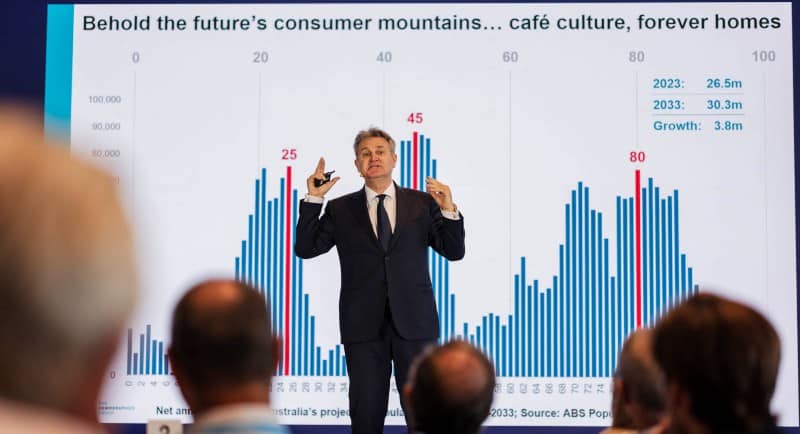
Bernard Salt
Josh Goldstine, Barbie
Warner Bros Picture Group’s president, worldwide marketing stepped the audience through the marketing campaign behind the cultural juggernaut that was the Barbie movie.
Goldstone emphasised the importance of earned, owned, and shared media working together to create an impression of ubiquity, and drive cultural impact – including more than 114m visits to the ‘This Barbie Is’ generator, $85m in partnerships value, a “money can’t buy” Barbie takeover of relevant Google search result pages that “completely changed the [search] experience”, and a clever focus on out-of-home to “turn the world pink”.
This cultural cachet meant many partnerships had “nothing to do with us” – lots of businesses were “doing unlicensed things” to “jump on the bandwagon”. Barbie’s official partnerships were “very well curated,” Goldstine said.
He claimed the marketing budget was lower than speculation suggested. Some guesses were “astronomically high” and double what was actually spent, he said.
When the movie teaser image dropped a year before its launch, Barbie pink began infiltrating categories including fashion. The marketing team worried Barbie-core would run its course before the movie had even launched.
Goldstine stressed the importance of considering non-core audiences. Through Warner Bros’ connection with the NBA – part of the company’s inventory – the team exposed Barbie to a primarily male audience, otherwise not part of its core media buy. “We wanted to leave no stone unturned in terms of finding audiences.”
While there’s many movie marketing campaigns that Goldstine wishes he could re-do, “this wasn’t one of them.” Almost everything went right, and “had a positive feedback loop.”
“Chance favours the well-prepared,” he said.
As for a sequel? There’s talks of one, but he hasn’t seen a script yet.
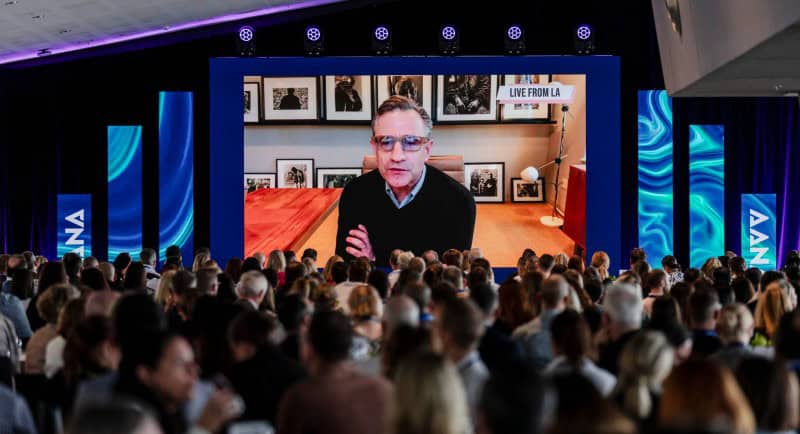
Josh Goldstine
Nic Taylor, LEGO
The stage was set for the SVP at the Lego Group and global head of the LEGO agency – but so were the tables. Taylor ensured bowls of LEGO were placed on every table so delegates could build and play while they listened.
At LEGO, “we are literally people’s imaginations”. It’s a brand that shares similarities with Beyonce and Taylor Swift, Taylor suggested: “There are some people who buy that product and are deeply, deeply committed to that product” – fans. Fandom is a driver of growth, she explained.
While LEGO was close to going broke in the early 2000s – encouraged to sell to “management consultants, no doubt” – it grew revenue by 2% in 2023 while the category declined. “We gained market share in a really tough year.”
That growth can partly be attributed to the family-owned business’ heritage of craft, care, and attention-to-detail, its investment in brand, and its focus on purpose and audiences it was previously underserving.
While the LEGO brick does not have a gender, language like ‘building’ and ‘construction’ had the effect of excluding girls. Changing this is one of her key priorities. The same goes for adults – or adult fans of LEGO (AFOL) – who “are prepared to pay for these beautiful experiences.”
The LEGO stores – the biggest of which is in Sydney – act like advertising too. As for other localisation, Nine’s Lego Masters is the “best ad campaign ever made,” Taylor suggested.
It was a homecoming for the Australian and former local DDB CEO, who moved to Denmark to take on the role two and a half years ago from Spain, where she worked for bespoke DDB agency C14torce. Her life in Denmark is gentler, and less “ferocious” than agency life here, she said. Leadership is crucial: “20% of my bonus is based on what people say about me.”
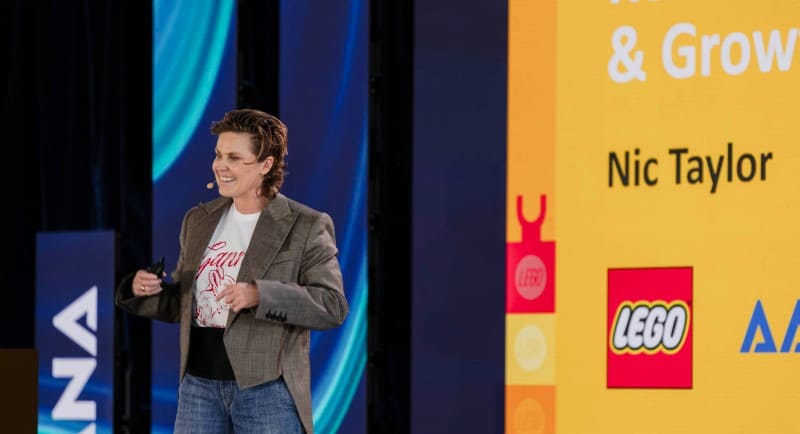
Nic Taylor
Dianne Everett and Jackie Lee-Joe, The Matildas
Everett, GM of brands, partnerships, and creative at Commonwealth Bank, and Lee-Joe, deputy chair at Football Australia, talked the audience through the results the Matildas performance in last year’s World Cup drove for both brands, and the nation.
The team’s World Cup campaign generated $1.32 billion for the economy, sold more than 1.2 million tickets, and attracted 86,654 international visitors and 403,136 attendees for all seven sold-out Matildas matches.
Awareness of CBA’s football partnership was doubled, and CBA is now ranked in the top 3% of iconic brands globally by brand equity, according to Kantar.
Women and girls’ participation in the game has grown from 21% to 26% since 2021.
The CommBank team experienced unprecedented social engagement, achieving 132 days’ of owned social engagement. Everett joked that the bank is not used to that level of social engagement.
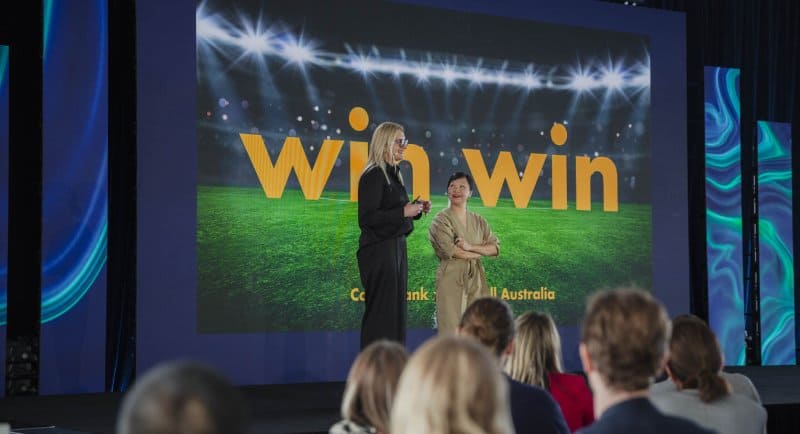
Dianne Everett & Jackie Lee-Joe
Janine Allis, Boost Juice
Allis spoke of her journey building Boost – now the biggest juice bar business in the world – appearing on Survivor and other TV shows like the recent Gordon Ramsay‘s Food Stars, and her husband and son’s experience of buying and growing Yo-chi, a frozen yoghurt and açai business.
Yo-chi will double next year, and double again the year after, she claimed.
She shared leadership tips, and said while she doesn’t understand TikTok, she knows that Facebook and Instagram’s algorithms make it “impossible” in terms of the cost of acquisition.
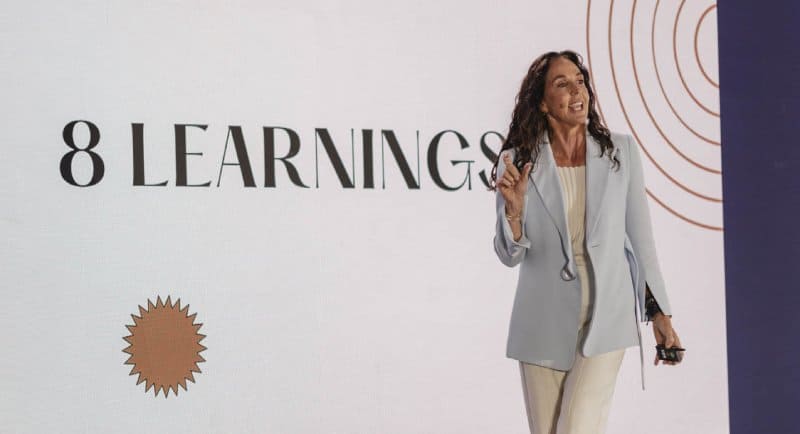
Janine Allis
Richard Oppy, AB InBev
Oppy, an Australian based in New York in his role as vice president of global brands, was the final speaker of the day. He reviews his “justice league” of an agency roster annually, and hates it when clients don’t credit agencies, or throw them under the bus when things go wrong.
Agency relationships are like a marriage, he proposed – “there’s going to be ups and downs.”
Oppy shared how the business’ creative process – which includes a “mini Cannes” internal awards show – led to the business becoming the #1 advertiser according to WARC three years in a row (2022-2024) after ranking 42nd in 2018, topping the Effies’ effectiveness index in 2022 and 2023 from 7 in 2018 and 2019 and 4 in 2020, and being named Creative Marketer of the Year at Cannes in 2022 and 2023 – nabbing eight Lions in 2017 and 48 in 2023.

Richard Oppy
See also: ‘There is no cutting corners’: Nic Taylor on LEGO’s craft, care, and fandom
